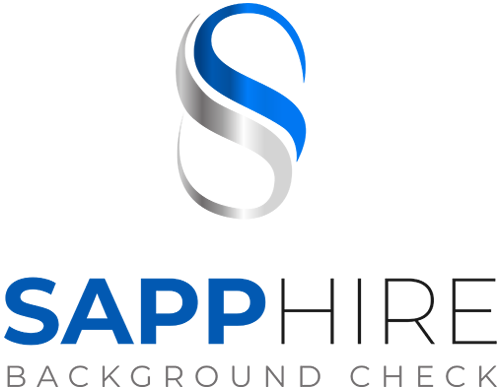What is the Most Common Pre-Employment Drug Test?
- March 31, 2025
- Posted by: SappHire Check
- Category: background check tips

What is the Most Common Pre-Employment Drug Test?
Pre-employment drug testing has become a standard practice for many businesses looking to ensure workplace safety, productivity, and reduce liability. According to the National Safety Council, employees with substance use disorders miss nearly 25 days of work annually, almost three times the absenteeism rate of their peers. With substance abuse costing American businesses billions annually in lost productivity, accidents, and healthcare costs, it’s no wonder that many employers implement drug screening as part of their hiring process. Let’s dive into the topic: What is the Most Common Pre-Employment Drug Test?
But with various testing methods available, many employers and job seekers wonder: what is the most common pre-employment drug test? The answer is clear: urine testing remains the gold standard and most widely used method for workplace drug screening.
Understanding Pre-Employment Drug Testing
Pre-employment drug testing refers to the screening of job applicants for the presence of illegal drugs or prescription medications used improperly. According to the Substance Abuse and Mental Health Services Administration (SAMHSA), employers can make passing a drug test a condition of employment, ensuring that all job candidates undergo testing prior to being hired. The primary purpose is to identify potential employees who may pose safety risks, productivity issues, or liability concerns due to substance abuse.
Pre-employment drug screening offers numerous benefits:
- Reduced workplace accidents: The Department of Labor reports that substance abusers are 3.6 times more likely to be involved in workplace accidents.
- Decreased absenteeism: Employees with substance use disorders miss significantly more workdays.
- Improved productivity: Drug use on the job can reduce productivity by up to 33%.
- Lower turnover rates: Companies with drug testing programs report 19% lower turnover on average.
- Reduced workers’ compensation claims: Employers with testing programs experience up to 51% reduction in workers’ comp claims.
Common Types of Pre-Employment Drug Tests
Urine Tests
Urine testing is the most widely used pre-employment drug screening method, accounting for nearly 90% of all workplace drug tests. Its widespread use is driven by its reliability, cost-effectiveness, and ability to detect a broad range of substances. The process begins with the collection of a urine sample from the applicant at a designated testing facility. This sample undergoes an initial immunoassay screening to identify the presence of specific drug metabolites. If the preliminary test yields a positive result, a more advanced gas chromatography-mass spectrometry (GC-MS) confirmation test is conducted to eliminate false positives, ensuring accuracy and reliability.
Standard 5-Panel Drug Test Components
The most common urine drug test screens for five major categories of substances:
- Marijuana/THC: Detection window of 3-30 days depending on usage frequency
- Cocaine: Detectable for 2-4 days after use
- Amphetamines/methamphetamines: Visible in urine for 1-3 days
- Opiates (including heroin, morphine, codeine): Detectable for 1-4 days
- Phencyclidine (PCP): Remains in the system for 7-14 days
Many employers also opt for expanded panels that may include benzodiazepines, barbiturates, methadone, MDMA, and oxycodone.
Hair Testing
Hair testing involves collecting approximately 100 strands of hair cut close to the scalp. This method detects drug metabolites deposited in the hair shaft via the bloodstream and offers a 90-day detection window. While more expensive ($100-$150 per test), it’s harder to adulterate and increasingly popular for executive positions. Its long detection period makes it ideal for identifying habitual or long-term drug use rather than recent consumption. However, because it does not detect immediate impairment, it is less commonly used for post-accident or reasonable suspicion testing.
Oral Fluid/Saliva Testing
Oral fluid testing involves collecting a saliva sample using a swab from inside the applicant’s mouth. Its main advantages include observed collection (reducing cheating), detection of very recent drug use, and less invasiveness, making it a popular alternative to urine tests in some industries. However, it offers a shorter detection window (1-3 days) than urine testing. Due to its ease of administration and ability to identify recent substance use, saliva testing is often favored for post-accident or reasonable suspicion testing. However, its limited detection period makes it less effective for identifying long-term drug use compared to urine or hair testing.
Blood Testing
Blood testing provides the most accurate results but is rarely used for pre-employment screening due to its invasive nature and high cost ($100-$300 per test). It shows current drug presence and impairment but has a very short detection window. Because of its precision, blood testing is more commonly used in legal or medical settings where immediate intoxication needs to be confirmed. Additionally, its administration requires trained medical personnel, further limiting its practicality for routine workplace drug screening.
Breath Alcohol Testing
While not typically part of standard pre-employment screens, breath alcohol testing may be included for certain positions. It detects only very recent alcohol consumption and shows current impairment levels. This makes it particularly useful for roles where on-the-job sobriety is critical, such as those in transportation, healthcare, and heavy machinery operation. Unlike urine or blood tests, which can detect alcohol metabolites over a longer period, breath testing provides real-time results, helping employers assess immediate fitness for duty.
Pre-Employment Drug Testing Laws and Regulations
Drug testing in the workplace must navigate a complex landscape of federal and state regulations.
Federal Regulations
- Drug-Free Workplace Act of 1988: Requires federal contractors and grant recipients to maintain drug-free workplace policies
- Americans with Disabilities Act (ADA): Protects recovering addicts from discrimination but permits testing for current illegal drug use
- Department of Transportation (DOT) Requirements: Mandates testing for safety-sensitive positions in transportation industries
State Laws
State laws vary significantly, creating a patchwork of requirements around when and how testing can occur, procedural requirements, and medical/recreational marijuana considerations.
The Pre-Employment Drug Testing Process
A typical pre-employment drug testing process follows these steps:
- Policy development: Creating a comprehensive written drug testing policy
- Applicant notification: Informing candidates about testing requirements during recruitment
- Conditional job offer: Extending an offer contingent on passing a drug test
- Written consent: Obtaining signed permission from the applicant
- Sample collection: Collecting the specimen at an approved testing facility
- Laboratory analysis: Processing the sample using validated testing methods
- Medical review: Having positive results reviewed by a Medical Review Officer (MRO)
- Result reporting: Communicating outcomes to employers and candidates
- Decision-making: Taking appropriate action based on test results
Developing an Effective Drug Testing Policy
An effective drug testing policy should clearly outline its purpose and scope, specifying the types of testing to be conducted, such as pre-employment, random drug testing, or post-accident screenings to ensure a drug-free workplace.
Additionally, the policy should include details on employee assistance programs, confidentiality provisions, and the appeals process. A well-structured policy ensures fairness, legal compliance, and a safer workplace while providing support for employees who may need help addressing substance use issues.
Best Practices for Pre-Employment Drug Testing
To maintain an effective and legally compliant drug testing program:
- Apply testing consistently across similar job categories
- Use certified laboratories and collection sites
- Employ qualified Medical Review Officers
- Keep test results confidential
- Document all procedures and follow them consistently
- Stay current with changing laws and regulations
- Consider alternatives for medical marijuana in legal states
- Provide clear notice and information to all applicants
- Establish written procedures for handling positive results
Contemporary Considerations in Pre-Employment Drug Testing
Marijuana Legalization Impact
With medical marijuana legal in 37 states and recreational use permitted in 21 states, employers face new challenges. Many companies are modifying their policies to accommodate legal medical use while still prohibiting on-the-job impairment. Some states now restrict employers from taking adverse action based solely on marijuana-positive tests.
Remote Work Considerations
The rise of remote work has prompted many employers to reconsider drug testing policies. Some companies now limit testing to safety-sensitive positions or have shifted focus to performance-based assessments rather than substance screening.
Conclusion
Urine testing remains the most common pre-employment drug screening method due to its cost-effectiveness, regulatory approval, and ability to detect a wide range of substances. While alternative methods like hair, oral fluid, and blood testing offer unique advantages, urine testing continues to be the industry standard for its balance of reliability, affordability, and legal acceptance. As workplace drug testing evolves alongside changing laws and societal attitudes, employers must implement clear policies that ensure both compliance and fairness while maintaining a safe work environment.
At Sapphire Background Check, we provide comprehensive pre-employment screening solutions, including customized drug testing programs that align with your company’s specific needs and industry regulations. Our expertise helps businesses streamline the hiring process, enhance workplace safety, and navigate the complexities of employment screening with confidence. Contact us today to learn how we can support your hiring and compliance efforts.
FAQs
What drugs do most employers test for?
Most employers test for a standard 5-panel drug screen that includes marijuana (THC), cocaine, amphetamines/methamphetamines, opiates, and phencyclidine (PCP), and many comprehensive drug and alcohol testing programs also check for alcohol impairment.
What is the most common panel pre-employment drug test?
The 5-panel drug test is the most common panel used for pre-employment screening, though some employers opt for expanded 10-panel tests that also include benzodiazepines, barbiturates, methadone, propoxyphene, and MDMA, with employee drug testing requirements varying by industry.
What is the best drug test for employment?
Urine testing is generally considered the best drug test for employment due to its cost-effectiveness, wide acceptance, federal approval for regulated testing, and balance between detection window and ease of administration, though blood drug tests offer the highest accuracy for determining current impairment.
Which one is the most common type of pre-employment tests?
Urine testing is by far the most common type of pre-employment drug test, accounting for approximately 90% of all workplace drug screens across industries, with employers typically receiving drug test results within 24-72 hours.
